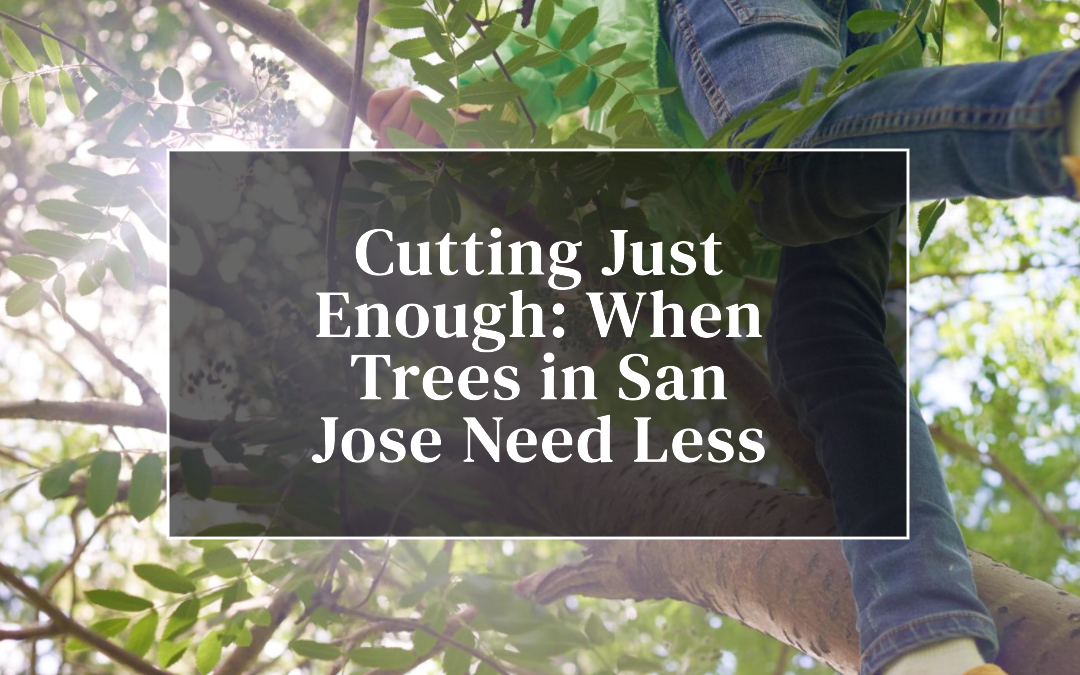In San Jose, maintaining trees is essential for aesthetic appeal and ecological balance.
While many homeowners think that more trimming and cutting are always better, that’s not always the case. Sometimes, less is more.
This article focuses on knowing when your trees actually need less cutting and how to maintain them without going overboard.
Understanding Light Pruning
Why consider light pruning? It’s often all a tree needs for optimal health.
Light pruning typically involves removing dead, diseased, or damaged branches without significantly altering the tree’s shape.
This method maintains the tree’s natural beauty and health while minimizing stress. It’s an excellent option for trees that don’t require significant reshaping or size reduction.
Signs of Over-Trimming
What happens if you trim too much? Over-trimming can lead to a slew of issues.
When a tree is over-trimmed, it can suffer from “tree stress,” which weakens its immune system. Signs include leaf drop, reduced growth, and susceptibility to diseases and pests.
The tree may also produce water sprouts, which are small branches that grow at the site of the pruning cut, signaling stress and imbalance.
Assessing Tree Health
How do you know if your tree is healthy? A healthy tree often doesn’t require extensive cutting.
Before reaching for the pruning shears, assess the overall health of your tree. Look for signs of disease, such as discolored leaves or fungal growth, and structural issues like crossed branches. If the tree appears mostly healthy, light pruning may be all that’s needed.
Young Trees vs Mature Trees
Why does the tree’s age matter? Different ages require different amounts of trimming.
Young trees generally benefit from more frequent light pruning to help shape them and promote strong growth.
In contrast, mature trees usually need less frequent but more strategic cuts to remove dead or weak branches and help sustain their health.
The Impact of Local Climate
Why is understanding your local climate crucial? San Jose’s specific climate conditions affect how much cutting your trees may need.
San Jose experiences a Mediterranean climate with wet winters and dry summers. Different tree species respond uniquely to these conditions, affecting their pruning needs.
Some trees may require less frequent trimming during the dry season to reduce stress. Knowing the local climate’s impact on your tree species can guide you in making better pruning decisions.
Recognizing Tree Species
Why is it important to know your tree species? Different species have different pruning needs.
Different types have specific needs when it comes to tree pruning. For example, fruit trees require more frequent but lighter pruning to encourage fruit production.
Ornamental trees, on the other hand, might need less cutting to maintain their shape and aesthetics. Knowing your tree species can help you decide the right amount of cutting required.
Conclusion
Less can often be more when it comes to tree maintenance in San Jose. Light pruning offers a balanced approach to keeping your trees healthy without causing undue stress.
By recognizing signs of over-trimming, assessing tree health, considering the tree’s age, and seeking professional guidance, you can ensure that you’re cutting just enough.
Your trees will beautify your surroundings and contribute positively to San Jose’s urban canopy.


